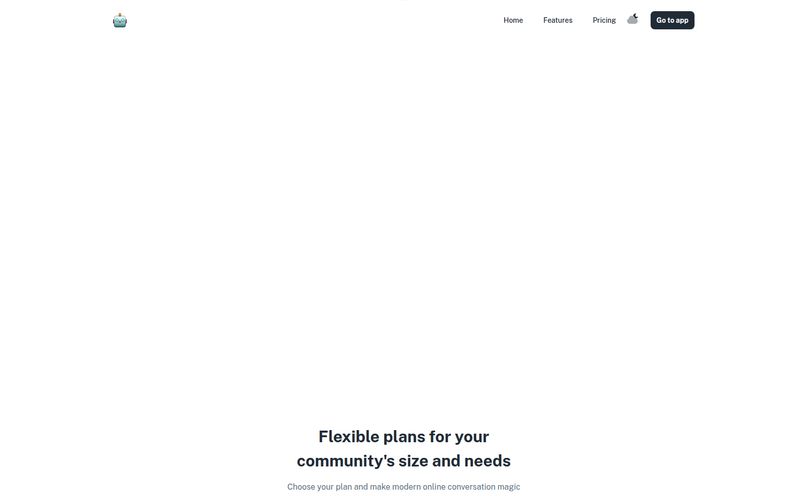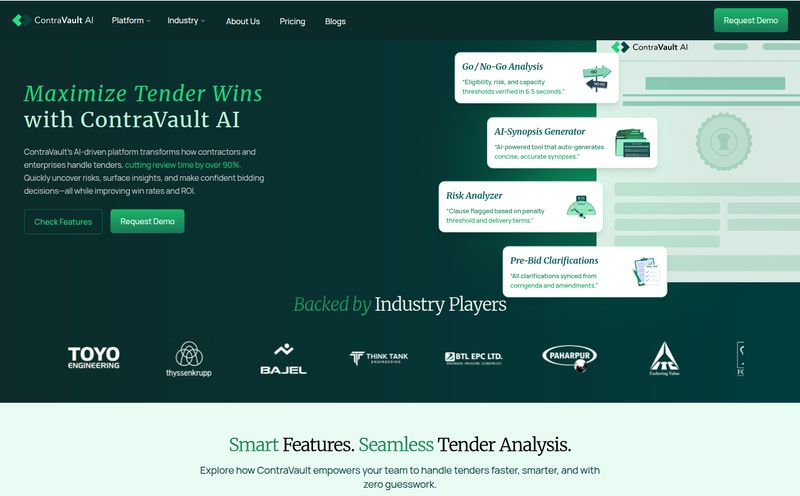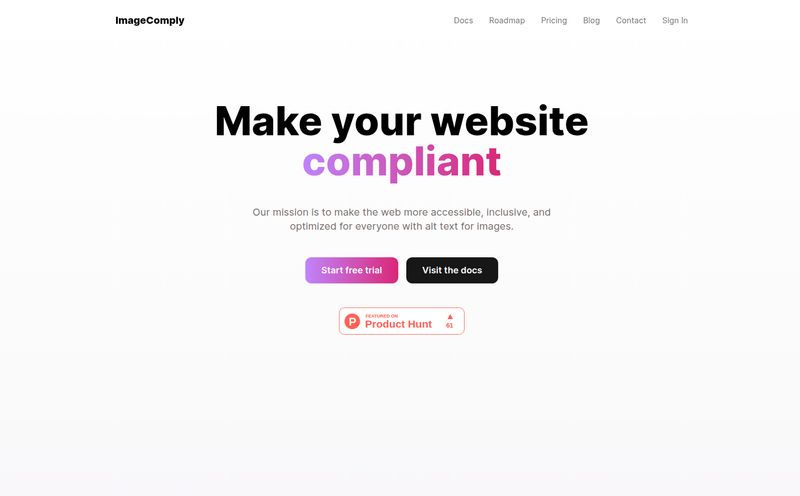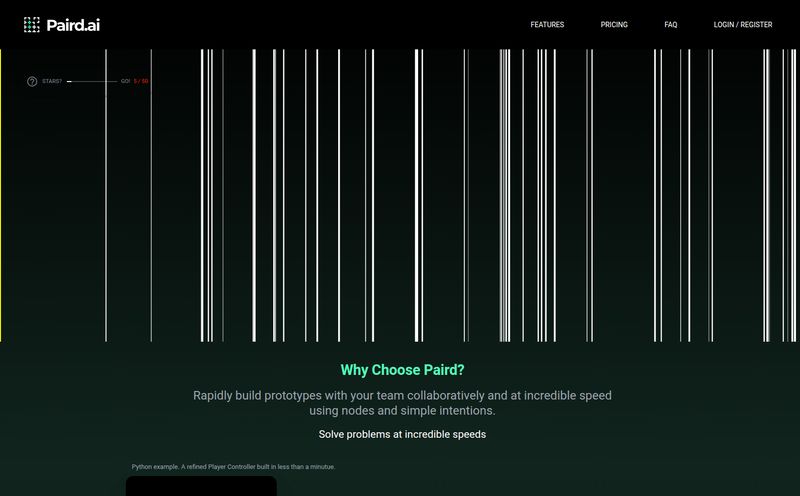We’ve all been there. You’re a teacher, you’ve prepped a fantastic lesson, and you pose this beautifully crafted, open-ended question to your class. You look out at a sea of faces. And you get… nothing. Just the gentle hum of the projector and that one kid in the back who is definitely asleep with his eyes open.
Getting a real, flowing, and inclusive class discussion going can feel like trying to start a campfire in the rain. Some students dominate the conversation, while others would rather chew on their own arm than speak up. It’s a perennial problem. For years, the answer has been a mix of pedagogical tricks and sheer force of will. But lately, I've been seeing a new breed of tools pop up, and one that recently landed on my radar is Parlay Ideas. It’s an AI-powered platform that claims to be the future of student discussion, and honestly, I was skeptical. But after digging in, I’m… well, I’m pretty impressed.
So, let's talk about what this thing actually is and whether it can truly solve that awkward silence problem.
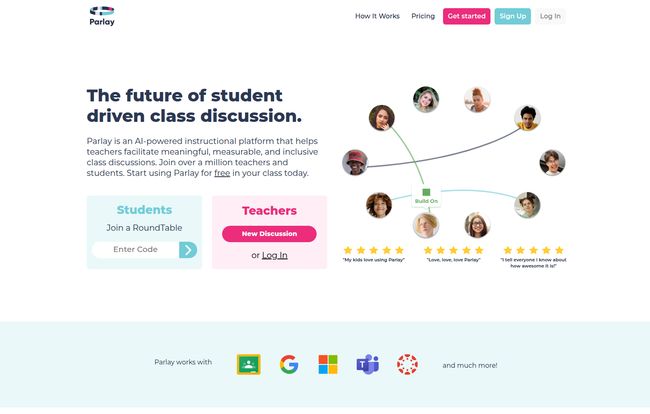
Visit Parlay Ideas
So, What Exactly Is Parlay Ideas?
At its core, Parlay Ideas is an instructional platform designed to get students talking—and thinking—more deeply. Think of it as a digital moderator, a structured debate club, and a smart teaching assistant all rolled into one. It’s not just another forum or message board; it’s a purpose-built environment for both written and verbal discussions.
The whole idea is to move beyond the simple “teacher asks, student answers” model. It aims to create a space where students can build on each other's ideas, provide thoughtful feedback, and develop those squishy-but-critical skills like critical thinking, collaboration, and communication. And it does this with some genuinely clever features.
The Standout Features That Made Me Look Twice
I’ve seen a lot of EdTech platforms that are just old ideas in a new digital wrapper. Parlay feels a bit different. Here’s what caught my eye.
Written and Verbal RoundTables: A Two-Pronged Attack
This is the bread and butter of the platform. Parlay brilliantly acknowledges that not all students shine in the same environment. The Written RoundTables are like supercharged discussion boards. Students respond to a prompt, but then they can anonymously review and give feedback on their peers' submissions before seeing the rest of the class's ideas. This little tweak encourages more original thought, rather than just piggybacking on the first popular answer. It's a fantastic way to give introverted or more reflective students a powerful voice.
Then you have the Verbal RoundTables. This is the feature that really made me go, “Oh, that’s smart.” It’s designed to support live, in-class discussions like Socratic seminars. The teacher can use the interface to track who is speaking, how often, and even tag comments to specific discussion skills (like 'using evidence' or 'asking a clarifying question'). It gamifies participation just enough to be encouraging, providing real-time data on the conversation's flow. No more trying to remember who said what while also trying to facilitate the actual talk.
Parlay Genie: Your AI Discussion Co-pilot
Let’s be real, coming up with engaging, high-level discussion prompts day after day is exhausting. The Parlay Genie is their answer. You can feed it pretty much anything—a YouTube video, a news article, a PDF of a primary source document—and the AI will generate a whole set of discussion questions, vocabulary words, and even follow-up prompts.
Is it perfect? Of course not, no AI is. But as a starting point? It's a massive time-saver. It can take the grunt work out of lesson prep, freeing you up to focus on the more human aspects of teaching. I see it as a creative partner, not a replacement for a teacher's professional judgment.
The Parlay Universe: A Library of Ideas
Staring at a blank page is intimidating for everyone, teachers included. The Parlay Universe is a massive, searchable library of over 5,000 ready-to-use discussion prompts on every topic imaginable, created by other educators. It’s an incredible resource for inspiration or for those days when you just need a solid, ready-to-go activity. You can find something for your history class, your science lab, or even a current events discussion. It's community-driven content at its best.
The Practical Stuff: Integrations and Data
Any great tool is useless if it doesn't fit into a teacher's existing workflow. The team behind Parlay clearly gets this. The platform integrates with the big players: Google Classroom, Microsoft Teams, Canvas, Schoology, and more. This means you can import your class rosters and post assignments without having to juggle a dozen different logins and platforms. That alone lowers the barrier to entry significantly.
And the reports? Man, they're good. The Engagement Reports give you both a bird's-eye view and a granular look at student participation. You can see who is contributing, how their skills are developing over the semester, and identify students who might be falling behind. This isn't just about grading participation; it's about understanding your classroom dynamics and intervening in a targeted, helpful way.
The Good, The Not-So-Good, and The Honest Truth
No tool is a silver bullet. Based on my analysis and experience with similar platforms, here's my take. The biggest advantage is obviously the boost in student engagement. By providing multiple, safer ways to participate, you're going to hear from students you've never heard from before. The AI-powered prompts and the massive content library are also huge wins for busy teachers.
On the flip side, there's a learning curve. You and your students will need to get used to the platform, and that takes a bit of initial setup and training. It's also heavily reliant on technology. If your school has spotty Wi-Fi or limited device access, implementing Parlay effectively will be a challenge. Finally, the tool is only as good as the discussion it facilitates. A teacher still needs to guide the conversation and choose (or create) prompts that genuinely spark curiosity. The AI can help, but it can't do your job for you. Thank goodness for that, right?
What About the Price Tag?
Ah, the million-dollar question. Or, hopefully, a bit less. Like a lot of EdTech software aimed at schools and districts, Parlay Ideas does not list public pricing on its website. This typically means they operate on a quote-based model that depends on the number of teachers or students who will be using it.
My advice? Don't let the lack of a price tag scare you off. If this seems like a good fit for your school, reach out to them. They have a "Request a Quote" or "Book a Demo" option, which is the standard next step. It's the best way to see the platform in action and get a concrete number for your specific needs.
Frequently Asked Questions about Parlay Ideas
1. Who is Parlay Ideas best for?
It's designed for middle school, high school, and higher education teachers who want to foster deeper discussions. While it seems perfect for humanities and social studies, it's flexible enough for STEM classes to discuss ethics, experimental design, or problem-solving approaches.
2. Does this tool replace the teacher in a discussion?
Absolutely not. It's a tool to augment the teacher. Think of it as a facilitator's assistant. It handles the tracking and provides the structure, so the teacher can focus on guiding the conversation, asking probing questions, and connecting with students.
3. Can I try Parlay Ideas before my school buys it?
Most companies like this offer a free demo or a limited trial period for educators to explore the platform. The best way to find out is to visit their website and click the "Request a Demo" button. They want you to see how powerful it is.
4. How does the AI really work? Is it complicated?
For the teacher, it's not complicated at all. You just provide the source material (like a link or a document) to the Parlay Genie, and it does the hard work of analyzing it and generating relevant questions. It's built on advanced language models, similar to other AI tools you might have seen, but trained specifically for an educational context.
5. Is it difficult to integrate with Google Classroom or Canvas?
No, these integrations are designed to be as straightforward as possible. Typically, it involves a one-time authorization process from your school's IT admin, and then teachers can easily link their classes, import rosters, and post Parlay RoundTables as assignments directly within their LMS.
My Final Take: Is Parlay a True Game-Changer?
Look, the term "game-changer" gets thrown around a lot in the tech world. But for classroom discussions? Parlay Ideas comes pretty darn close. It's one of the most thoughtful and well-designed educational tools I've seen in a while.
It directly addresses the core challenges of classroom discussion—inequitable participation, lack of preparation, and the difficulty of assessment—with smart, practical solutions. It empowers the quiet students, challenges the confident ones to listen more, and saves teachers a ton of time. It's not magic, but it's a powerful ally in the quest to build a more thoughtful, engaged, and articulate generation of students. And if it can help kill that crickets-chirping silence for good, then I'd say it's more than worth a look.
Reference and Sources
- The official website for the platform: Parlay Ideas
- For more on the pedagogical method mentioned: The Paideia Seminar on Socratic Discussion
